Natural polyphenols are a class of polyphenolic compounds widely existing in living species. These compounds play essential roles in cyto-protection, pigmentation, metal coordination, iron transport, and signal transmission. In addition, natural polyphenols are reported with fascinating anticancer, anti-metastatic, antibacterial, antiviral, anthelmintic, anti-inflammatory, β-amyloid inhibition, myocardial protection, and immune-regulatory activities. And the compounds have also been widely used for the treatment of various diseases.Besides their diverse biofunctions, natural polyphenols also possess unique physicochemical features. The polyphenolic structure (catechol, pyrogallol) of these compounds are responsible for strong binding with various species via multiple hydrogen bonding, hydrophobic, π-π and cation-π interactions. Emerging from these chemical and functional signatures, natural polyphenols were widely used to fabricate biomaterials such as nanoparticles, nanocapsules, and hydrogels for the delivery of various cargo molecules.
Recently, the team from the South China Advanced Institute for Soft Matter Science and Technology of South China University of Technology published an review article in “Gaint” that particularly focused on strategies to prepare natural polyphenolbased biomaterials, and discussed the mechanism and beneficial roles of natural polyphenols in the delivery of proteins, nucleic acids and conventional drug molecules.
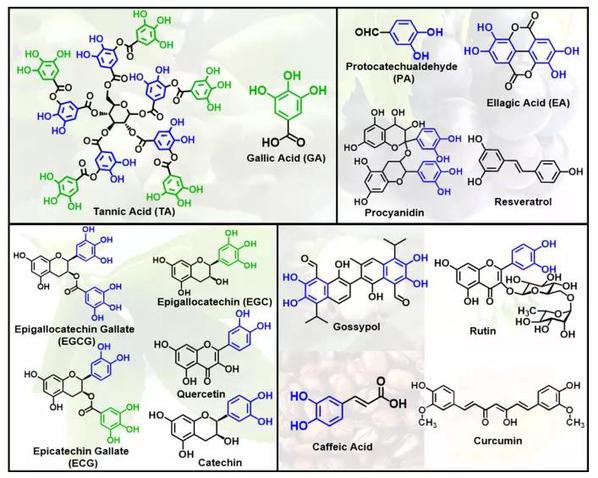
Figure 1. Chemical structures of natural polyphenols.

Figure 2. Schematic illustration of natural polyphenols-based drug delivery systems for various applications.
1. Fabrication of natural polyphenol-based biomaterials
1.1 Metal-phenolic coatings
The catechol and pyrogallol moieties on natural polyphenols could efficiently complex with a large number of metal ions, thus those naturally occurring polyphenolic building blocks were widely employed to fabricate the metal-phenolic coatings.
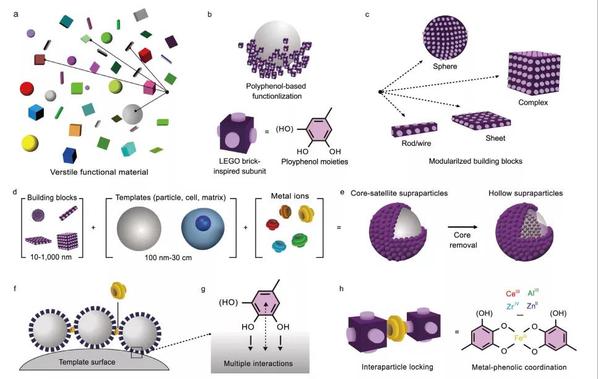
Figure 3. Metal-phenolic coatings on various substrates like LEGO bricks. Particle surface functionalization with polyphenol moieties (a-c), followed by particle assembly
directed by interfacial molecular interactions and interparticle locking of the functionalized particles using metal ions (d-h).
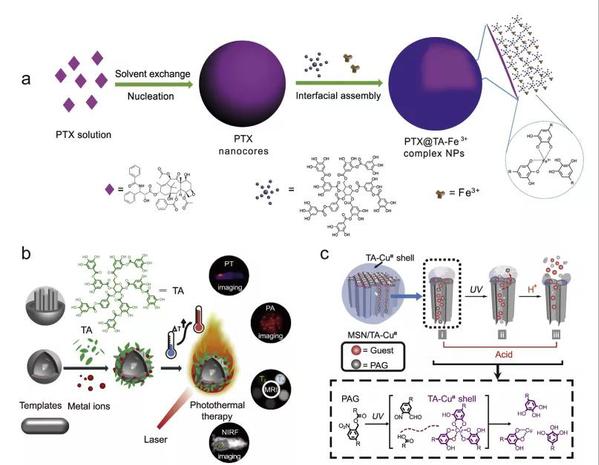
Figure 4. (a) TA-Fe (III) network coated PTX nanoparticles. (b) EGCG-Fe (III) coated nanoparticles for photothermal therapy and multimodal imaging. (c) TA-Cu (II) coated MSN for light-responsive drug delivery.
1.2 Layer-by-layer (LBL) films or capsules
LbL films or capsules are fabricated by sequential deposition of two or more polymers on a template surface via the electrostatic, hydrogen bonding, and covalent conjugation.
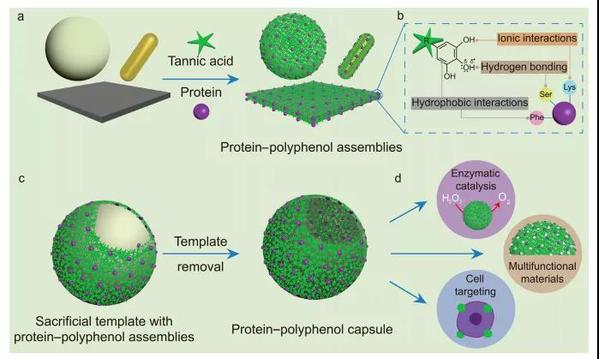
Figure 5. Interfacial assembly of protein-polyphenol coatings on different substrates (a) via non-covalent interactions (b). Protein-polyphenol capsules could be fabricated after the removal of template (c). The protein-polyphenol capsules could be used for various applications.
1.3 Nanoparticles
The coordination of natural polyphenol with metal ions in solutions generated multifunctional metal-phenolic nanoparticles. And the nanoparticles could be prepared by co-assembly of polyphenols with drug molecules. Besides,natural polyphenols could interact with biomolecules such as proteins and nucleic acids by non-covalent interactions to form biofunctional nanoparticles. Polyphenol could also be used to stabilize polymer micelles or nanoparticles via non-covalent or covalent crosslinking.
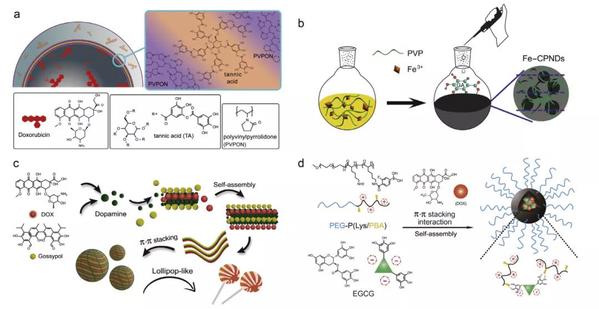
Figure 6. (a) LBL capsules consisted of TA and PVPON loaded with doxorubicin (DOX). (b) GA-PVP-Fe (III) nanoparticles. (c) Gossypol/Polydopamine/DOX nanoparticles. (d) EGCG cross-linked polymer micelles via catechol-boronate complexation co-loaded with DOX.
1.4 Polyphenol gels
The catechol and/or pyrogallol groups on natural polyphenols usually allowed them to crosslink with other species via covalent bonding, i.e. coordination with metal ions, or forming dynamic diester bond with boronates.
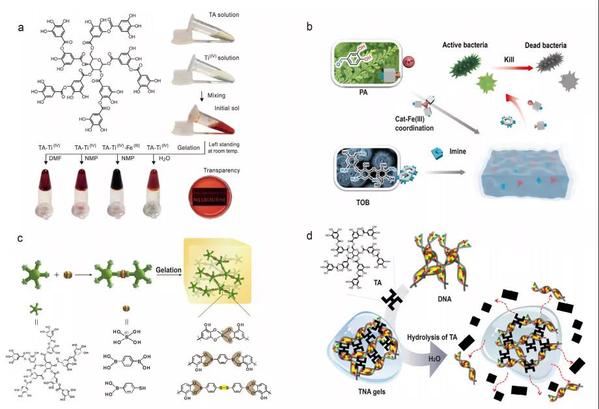
Figure 7. Polyphenol hydrogels. (a) TA-Ti (IV) hydrogels. (b) Aminoglycoside-PA-Fe (III) hydrogels. (c) TA-borate hydrogels. (d) TA-DNA hydrogels.

Figure 8. Amyloid fibril-EGCG hydrogels for the treatment of bacterial infection (a) and colitis (b).
2. Applications of natural polyphenols in protein, gene and drug delivery
2.1 Protein and peptide delivery
Protein drugs possess several advantages such as highly specific and effective, well-tolerated, and limited side effects in comparison to conventional small molecule drugs. The major challenge for protein and peptide drugs is their poor stability due to enzymatic degradation, and thus a suitable system is usually required.
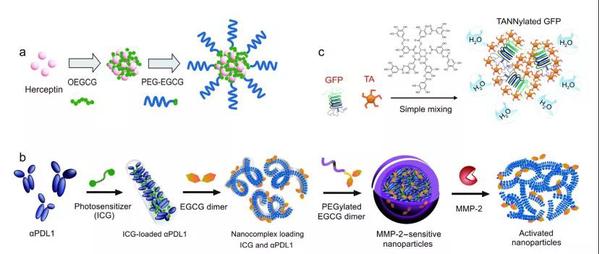
Figure 9. Protein nanoparticles prepared by natural polyphenol-protein interactions. (a) Herceptin nanoparticles. (b) Anti-PDL1 nanoparticles. (c) TANNylated GFP nanoparticles.
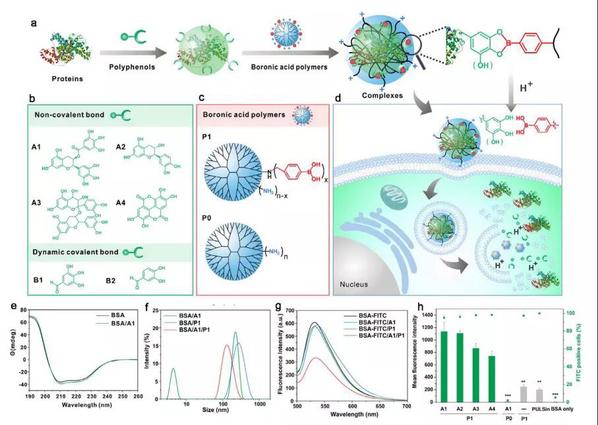
Figure 10. (a-d) Natural polyphenol-mediated cytosolic protein delivery by boronic acid-decorated polymers. (e) CD spectra of BSA and BSA-A1 complex. (f) Size of the BSA/A1, BSA/P1 and BSA/A1/P1 complexes. (g) Fluorescence intensity of BSA-FITC, BSA-FITC/A1, BSA-FITC/P1, and BSA-FITC/A1/P1 complexes. (h) Mean fluorescence intensity of transduced HeLa cells.
2.2 Gene delivery
Natural polyphenols with high binding affinity with DNA and siRNA were used to facilitate the condensation of nucleic acids by low molecular weight cationic polymers.
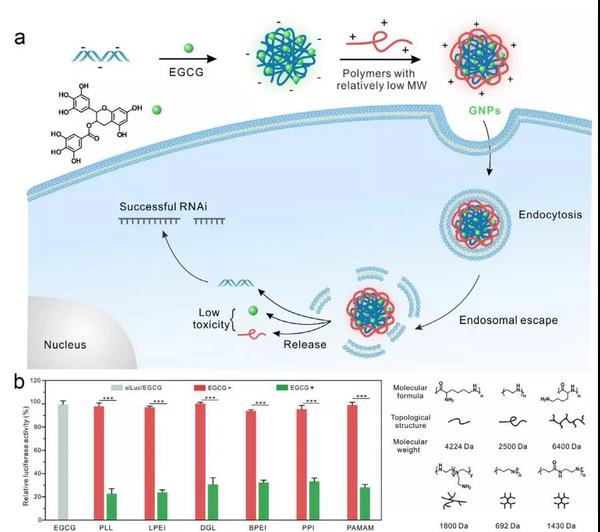
Figure 11. (a) EGCG-facilitated the siRNA delivery mediated by low molecular weight polymers. Schematic illustration of GNP formulation and the proposed gene silencing mechanism. (b) RNAi efficiency of GNPs consisting of polymers with different topological structures and chemical components (green bars).
2.3 Small molecule drug delivery
Natural polyphenols could be fabricated into various structured materials such as coating films, nanocapsules, nanoparticles, and hydrogels. These materials could be incorporated with diverse drugs for the treatment of cancers, bacterial infections, inflammation, etc.
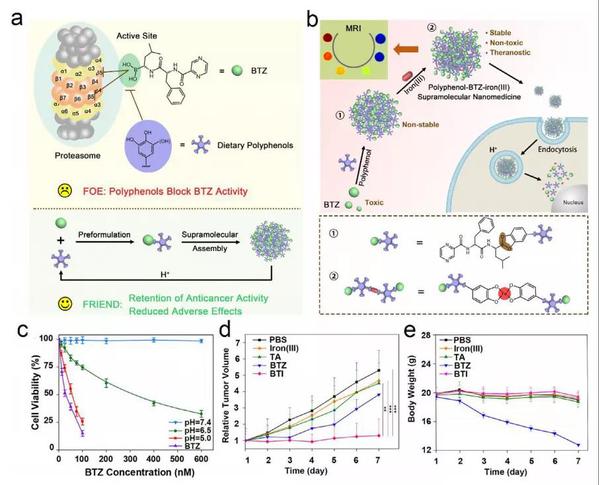
Figure 12. (a) Foe to friend strategy for the delivery of BTZ by natural polyphenols. (b) Supramolecular nanomedicine consisted of TA, BTZ and Fe (III). (c) In vitro cytotoxicity of BTI nanoparticles (pH 7.4, 6.5, and 5.0) on MDA-MB-231 cells. (d) Relative tumor volume and (e) body weight in MDA-MB-231 tumor bearing mice after intravenous administration of PBS buffer, FeCl3 solution, TA solution, BTZ and BTI solution.
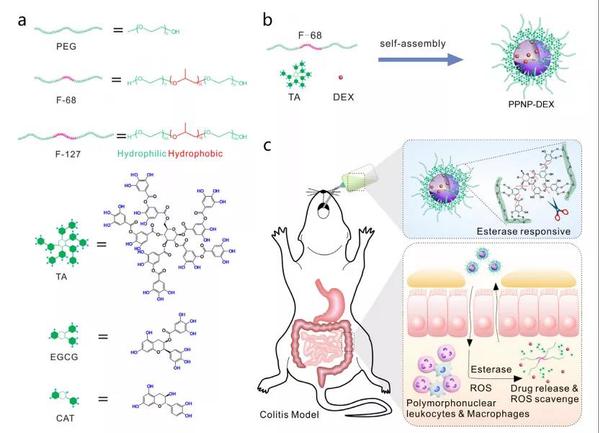
Figure 13. Esterase-responsive TA/F-68 nanoparticles loaded with DEX for the treatment of inflammatory disease.
Natural polyphenols in drug delivery systems: Current status and future challenges
Hui Wang#, Changping Wang#, Yuan Zou, Jingjing Hu, Yiwen Li*, Yiyun Cheng*
Giant 2020, 3, 100022
https://doi.org/10.1016/j.giant.2020.100022
